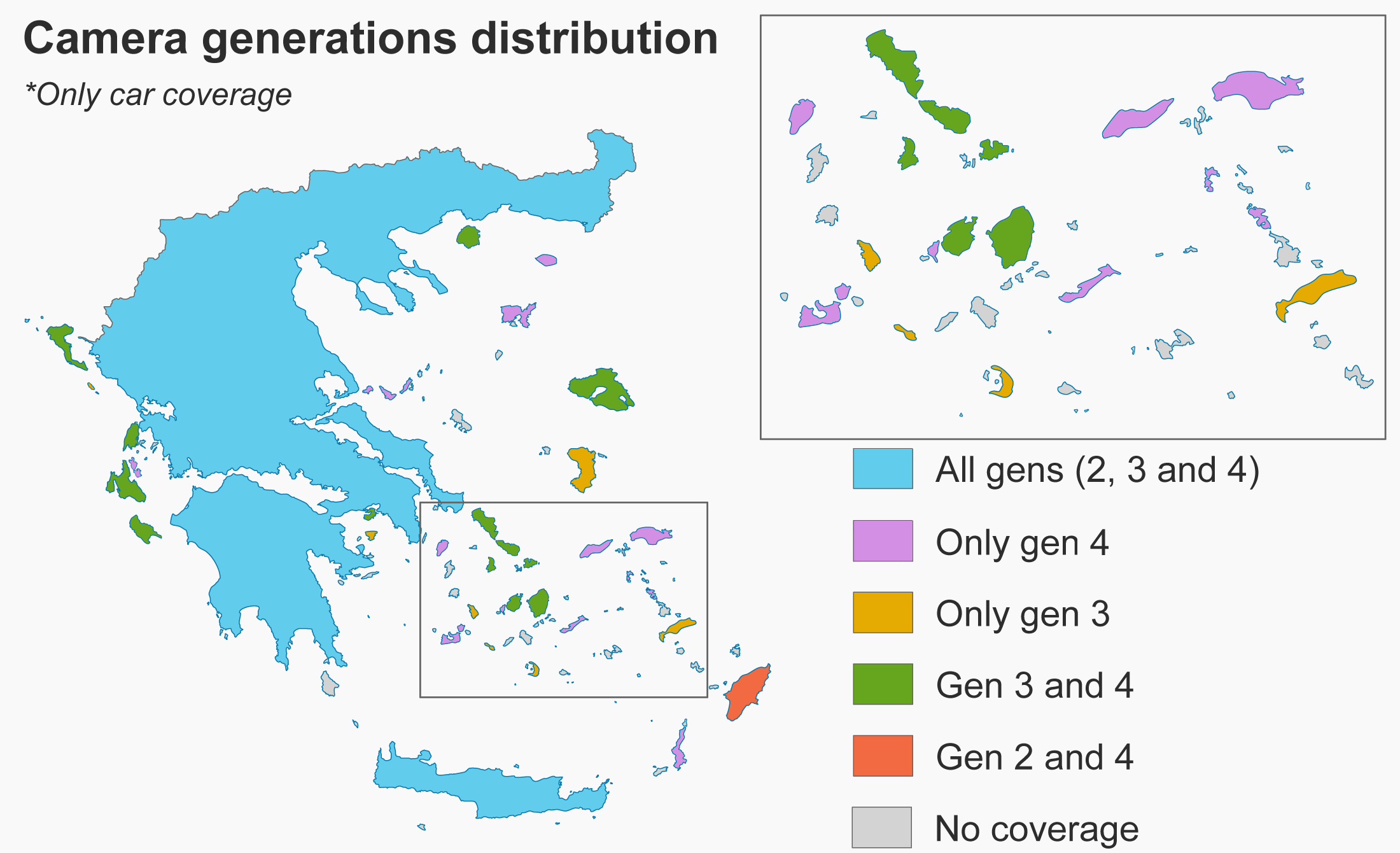
Greece
The Greek language features a unique alphabet not used in any other language. It shares similarities with both the latin and cyrillic alphabet, however the lower case letters generally have softer shapes than the cyrillic letters.
This type of small lamp, attached to the side of poles with a round shade above the light bulb.
NOTE: You can also find them in North Macedonia and Serbia.
Greek architecture shares a lot of features with other Mediterranean countries: a lot of white and pastel-coloured stone houses with orange tiled roofs. White houses are very common when compared to most other Mediterranean countries.
Urban residential buildings will generally be multi-floored, light-coloured and typically have connected balconies along one or multiple walls.
Perhaps the most recognisable style of Greek architecture are the white houses with blue fences, window frames and doors. Beware that these are mainly found on islands.




































